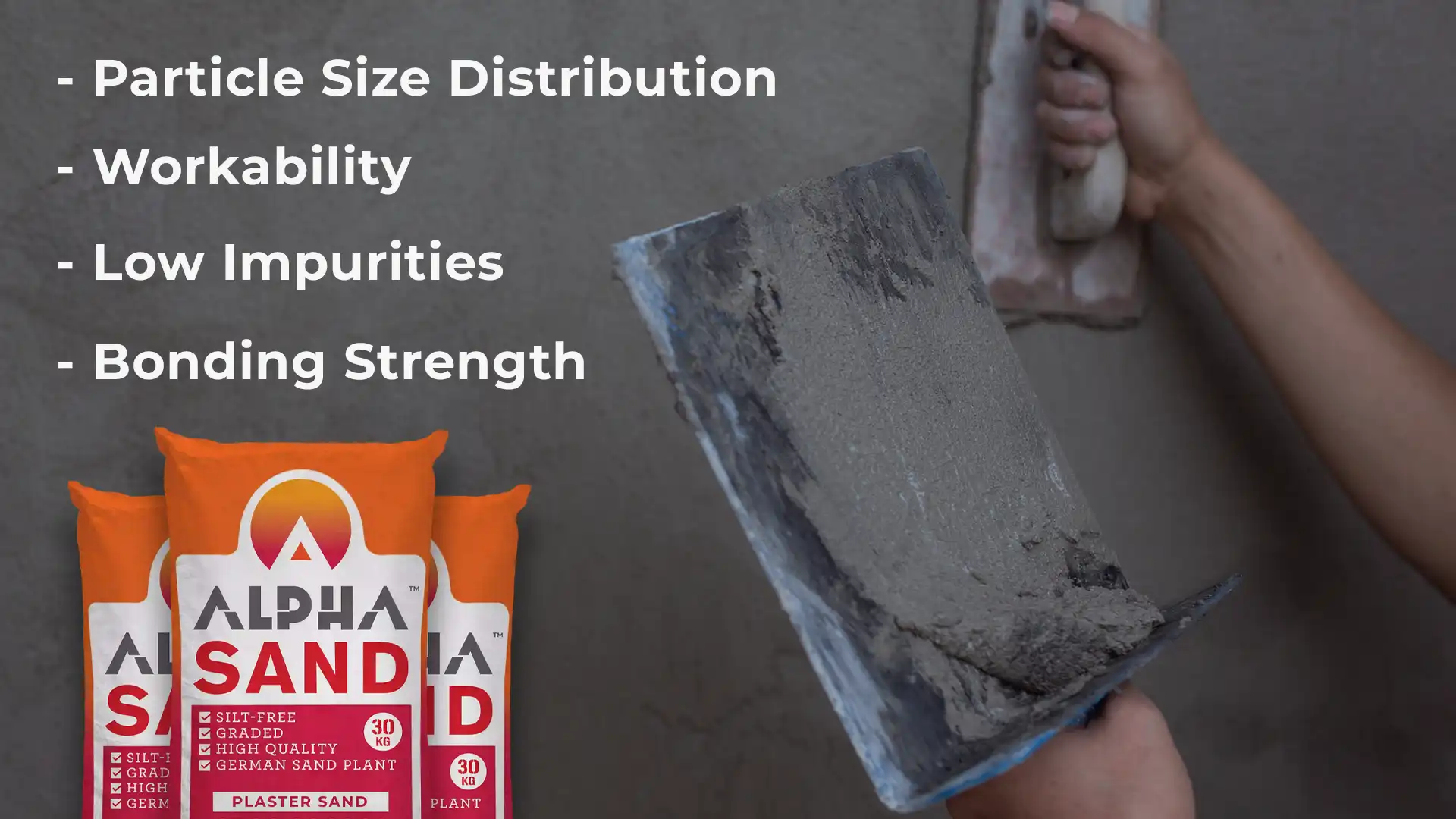
Plastering is the process of providing a smoother finish to the walls that act as a layer of protection. It is a barrier against weathering agents that might wear out the structure.
Plastering should be done with the right type of sand, as it directly reflects on the finishing of the wall. In this blog, let us look into which type of sand is best for plastering to provide a smooth and even finish to the walls and also protect the walls from all kinds of damage.
What is P Sand?
Plastering sand is the full form of P Sand, a type of sand that involves sand particles that are generally below 2.5 mm. It is produced by crushing fine aggregates into finer particles.
P Sand is commonly used for plastering; however, most also use it for masonry work.
Can M Sand be Used for Plastering Purposes?

No, plastering should not be done with m sand. This is because different sands have different properties, and using specific sands for specific purposes is highly recommended. As plastering is a crucial step in building construction, it is highly recommended that only P-sand be used for plastering to ensure the structure's durability and protection.
Few people use manufactured sand for plastering without knowledge of the adverse effects of using manufactured sand for plastering, as M sand doesn’t have the properties required for plastering. Therefore, regular or any other sand should not be used for plastering.
Also, Read the Difference between p sand and m sand.
Why is P Sand Suitable for Plastering?

Plastering Sand is more than just filler. The physical properties of sand, including particle size, shape, texture, and gradation, greatly influence the plaster's workability, adhesion, strength, and resistance. When cement and water are mixed with coarse and asymmetrical sand particles, it can be challenging to get a homogeneous combination, leading to an uneven surface that is vulnerable to breaking. On the other hand, plastering is more cohesive and smooth when the sand is well-graded, fine, and rounded.
Properties of Plastering Sand:
-
Workability: P sand's minute homogeneous particles make it easier to work with. It makes the work of the masons much easier. Consequently, it is easier to spread and apply plaster mixtures in a timely and even manner, resulting in a smoother and more uniform surface.
-
Low Impurities: P Sand must be screened and filtered well in order to get rid of all impurities like silt, clay, etc. Once it is free of all unwanted particles, it ensures a smoother finish and a strong bond between particles, thus ensuring that no water seeps in to form cracks.
-
Bonding Strength: The sand's uniform, small particles promote greater cement adhesion, resulting in a plaster coating that is more robust and long-lasting.
The type of sand you use for plastering can have a significant impact on the final finish's strength, quality, and longevity. Plastering is a process that includes coating walls and ceilings with a thin layer of a cement, sand, and water combination. This layer contributes to the structural stability of the structure while also serving aesthetic reasons by creating a smooth and aesthetically pleasing surface. The type of plastering sand you use will significantly impact how well the outcome turns out.
It is now clear that plastering sand is the best choice, but the question is where to get the best P sand.
Is There a Good Place to Buy Plastering Sand?

Definitely, Alpha Sand is the best place to buy P sand. Let's know why. Alpha-P Sand is specially designed to meet all the requirements of plastering. Customer satisfaction is our top priority, and we never compromise on quality.
Alpha Sand is a 25-year-old Bangalore-based company that provides high-quality sand and concrete blocks, adhering to IS code standards.
Alpha P Sand ensures the absence of minute, particular impurities like silt and clay that might further affect the structure's durability. The process of plastering is crucial as it provides a smooth finish to the walls and acts as a shield, protecting the wall from damage even in extreme weather conditions. Read this article to know the difference between river sand and plastering sand.
CONCLUSION:
Choosing the right plaster sand can make a huge difference in the quality and longevity of your plastered surfaces. Alpha P sand is a great choice because it is specifically manufactured for the same purpose of plastering.
Frequently Asked Questions:
1. How long does it take to complete the process of plastering?
Plastering takes from around 7 days to 15 days, depending on the room's measurements and the coating's thickness.
2. What is the recommended thickness of the coating of plaster?
The thickness of the coating of plaster on the external wall is recommended to be around 6mm, and the thickness of the coating on the internal wall is recommended to be 12mm.
3. How is the quality of the plastering mix determined?
The quality of the plastering mixture is determined by the quality of the materials used in it. The correct quality and quantity of sand and cement in the mixture, mixed to the perfect ratio, is what makes the plastering mix perfectly suitable for usage.
4. How do I find plastering sand suppliers in Bangalore?
Read this article to know more about P Sand Suppliers in Bangalore.